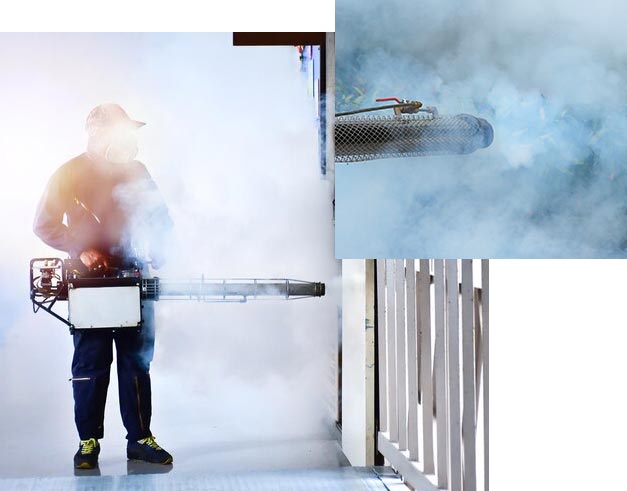
Whilst conventional cleaning may get rid of the germs that lie upon the surfaces we can see, it will not target areas which could be missed or hard to reach by some cleaners, such as underneath tables and within the spaces between cupboards. This leads to hotspots, where there may be larger volumes of bacteria.
Conventional cleaning may clean the common cold or influenza virus but it wouldn’t kill certain viruses like MRSA, which is what is known as antibiotic resistant bacteria that is present within healthcare settings. Fogging effectively kills all these pathogens and more including bacteria, fungi, and other viruses that may be present.

Conventional cleaning may clean the common cold or influenza virus but it wouldn’t kill certain viruses like MRSA, which is what is known as antibiotic resistant bacteria that is present within healthcare settings. Fogging effectively kills all these pathogens and more including bacteria, fungi, and other viruses that may be present.

Foggers produce a fine mist like droplets as small as 5 to 7.5 microns which reduce condensation, surface wetting, and possible corrosion, so it is safe for office equipment including computer keyboards and phones. Area coverage is more uniform, and the fog penetrates cracks, crevices, ventilation systems and other challenging areas like corners or hard to reach areas like underneath furniture and appliances.

Cleaning removes impurities like dirt and germs from surfaces of objects, generally using a detergent such as any multipurpose cleaner. Disinfecting works by using chemicals to kill germs on surfaces or objects to prevent the spread of infection. Through the process of cleaning first, followed by disinfecting, higher levels of sanitization are achieved, thus lowering the number of germs on surfaces or objects resulting in lowered risk of spreading infection.
Serving Vancouver & the Lower Mainland

